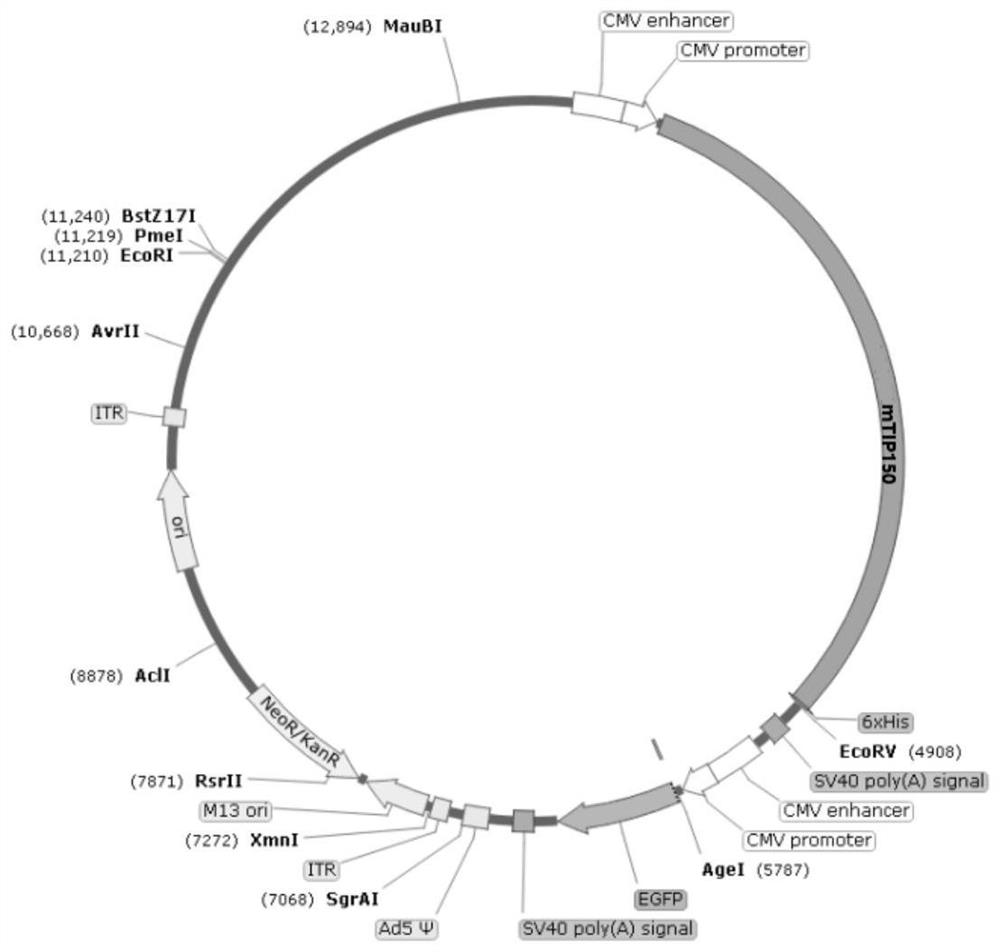Application of Tip150 protein agonist in hypoxia flagellum multiple morphological abnormality
A morphological abnormality and agonist technology, applied in the field of DNA recombination, can solve the problems of HMMAF genetic etiology and pathogenic mechanism are not clear, and the treatment effect is not good
- Summary
- Abstract
- Description
- Claims
- Application Information
AI Technical Summary
Problems solved by technology
Method used
Image
Examples
Embodiment 1
[0030] Example 1 Changes of Tip150 in mouse sperm under hypoxia
[0031] 1. Preparation of mouse hypoxic HMMAF model: mice were placed in a hypobaric oxygen chamber (pressure: about 360 mmHg, oxygen content 10%) simulating an altitude of 5800 m, and treated with continuous hypobaric hypoxia for 10 w to replicate the mouse hypoxic HMMAF model. The identified hypoxic HMMAF model was replicated successfully. And set the mice exposed to 21% oxygen concentration for 10 weeks as the control group.
[0032] 2. Sperm collection: open the abdominal cavity, take out the epididymis tissue, extract the bilateral epididymis tail for liquefaction and lysis, and obtain sperm cells (round sperm cells) and sperm (elongated sperm). Western blot was used to detect the expression of Tip150 in the epididymis caudate spermatids and sperm. The result is as figure 1 shown. The specific method is as follows:
[0033] (1) Protein preparation
[0034] 1) Rinse the cells to be treated with PBS warm...
Embodiment 2
[0054] Example 2 Construction of Overexpression Tip150 Vector
[0055] 1. Primer design
[0056] The genome sequence where the mouse Tip150 gene is located is GenBank Accession No.NM_029920.7 (UpdateDate2021-06-20), and primers were designed according to the genome sequence, and the primer sequences used are as follows:
[0057] Forward primer (SEQ ID NO.2): 5'-GTTTTCCCAGTCACGAC-3'
[0058] Reverse primer (SEQ ID NO.3): 5'-CAGGAAACAGCTATGAC-3'
[0059] 2. PCR amplification of the target fragment
[0060] Extract mouse genomic DNA, prepare the PCR amplification system shown in Table 2, mix gently, place in a PCR machine, and react according to the PCR program shown in Table 3;
[0061] Table 2 PCR amplification system
[0062]
[0063]
[0064] Table 3 PCR program
[0065]
[0066] This step yields the Tip150 gene fragment.
[0067] 3. The Tip150 gene fragment is connected to the carrier
[0068] (1) Restriction digestion of pAdEasy adenovirus expression vector ...
Embodiment 3
[0092] Embodiment 3 adenovirus packaging
[0093] 1. Cell culture
[0094] The day before transfection, 293 cells were inoculated in 60mm culture dishes, the medium was DMEM+10% Hyclon fetal bovine serum, and placed at 37°C with 5% CO 2 cultured overnight in an incubator.
[0095] 2. Transfection
[0096] When the cells grow to 70-80% of the bottom area, take the linearized plasmid of the recombinant adenovirus vector and use Lipofiter TM Transfection reagent for transfection. The specific steps are:
[0097] (1) Replace the complete medium 2 hours before transfection, take 4 μg of recombinant adenoviral vector linearized plasmid, dilute it with 300 μl of DMEM culture solution, and place it at room temperature for 5 minutes.
[0098] (2) Take 15μl of Lipofiter TM , diluted with 300 μl of DMEM culture solution, and left at room temperature for 5 minutes.
[0099] (3) Mix the two, and place at room temperature in the dark for 20 minutes. The mixture was then added to a 6...
PUM
| Property | Measurement | Unit |
|---|---|---|
| Titer | aaaaa | aaaaa |
Abstract
Description
Claims
Application Information
 Login to View More
Login to View More - R&D
- Intellectual Property
- Life Sciences
- Materials
- Tech Scout
- Unparalleled Data Quality
- Higher Quality Content
- 60% Fewer Hallucinations
Browse by: Latest US Patents, China's latest patents, Technical Efficacy Thesaurus, Application Domain, Technology Topic, Popular Technical Reports.
© 2025 PatSnap. All rights reserved.Legal|Privacy policy|Modern Slavery Act Transparency Statement|Sitemap|About US| Contact US: help@patsnap.com



